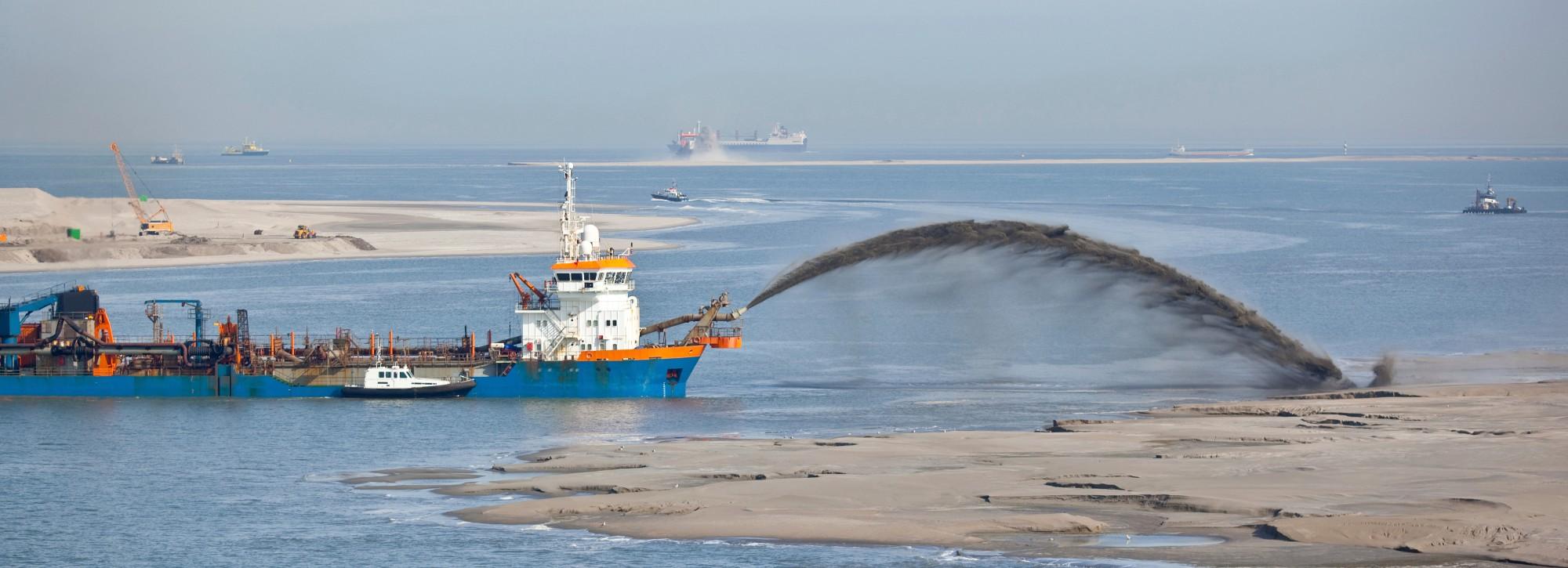
Dredging management
An overview of the environmental aspects of dredging, the latest technology and equipment that apply to dredging and the management of dredged material.
Dredging is often a key part of coastal infrastructure projects. It is central to the delivery of construction aggregates to the UK and in maintaining the navigability of our waterways, estuaries, ports and harbours. The global dredging market is worth approximately £8 billion per annum. Dredging is a highly specialist discipline and not one which is typically covered in UK Civil Engineering (or similar) degree courses. The cost of undertaking dredging works is often high - it can be tens of thousands of pounds per day - and the activities commonly have considerable risks associated with them. These may relate to factors such as weather delays, unknown seabed conditions (and therefore the ability to dredge), and unexploded ordnance.
This course is designed to provide an introduction to the subject of dredging and will assist those who are responsible for commissioning and managing dredging contractors and those who regulate dredging. The course will enable attendees to manage and regulate dredging projects and contractors more effectively and efficiently.
This is a classroom course and will be delivered in our offices at Howbery Park, Oxfordshire.
This course is aimed at those who are responsible for commissioning and managing dredging contracts and those who regulate dredging.
Course content
- Introduction to dredging and currently used terminology.
- Description of the different types of dredging equipment.
- Design of dredging works (capital-maintenance, marine-riverine).
- Modelling of dredging operations.
- Dredging optimisation.
- Environmental aspects to consider during dredging.
- Licensing, consents and key stakeholders identification.
- Environmental monitoring of the dredging operations.
- Dredging contract types.
- Project implementation and management.
- Avoidance of common disputes.
Who should attend
Project owners, those managing contractors, regulators, port and harbour authorities, coastal engineers, conservation agencies.
Learning outcomes
At the end of the course participants will understand:
- the key industry terms and most common dredger types available on the market, including how they operate and their working limits;
- how to plan, manage and monitor dredging with a view to reducing costs and risks in your own projects;
- how dredging is undertaken, including detailed explanations of the different stages/components of a dredging project;
- how dredging can impact the environment and how this can be addressed through planning, management, mitigation and monitoring of the project or activity;
- what the standard types of dredging contracts are, the key principles to consider when preparing a contract and how to minimise the risk of claims.
Course structure - classroom
This two-day classroom course is delivered at our offices in Wallingford, Oxfordshire.
The course content is spread over two days and includes a tour of our physical modelling facilities.
The course fee per delegate is £725.00 (excl VAT). Discounts are available for multiple bookings.
Course structure - online
The course has been designed by our industry experts and will deliver 16 hours of live lectures and exercises. Spread over four days, the course content comprises of 12 hours of lectures and four exercises.
The course lectures will be delivered live using MS Teams.
The course programme and links to the lectures are issued on registration and payment of the course fee.
The course fee per delegate is £450.00 (excl VAT).
Course leaders
Course login
Access joining instructions, course materials and course certificates inyour secure course area.
Want to know more?


